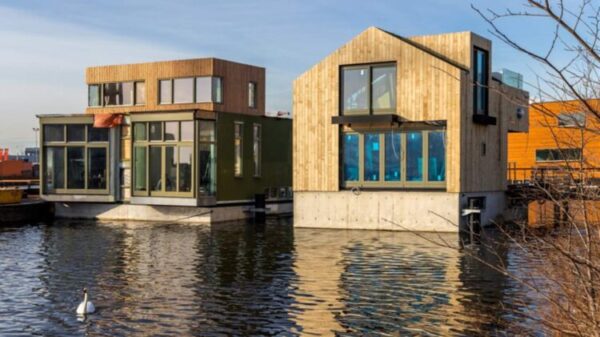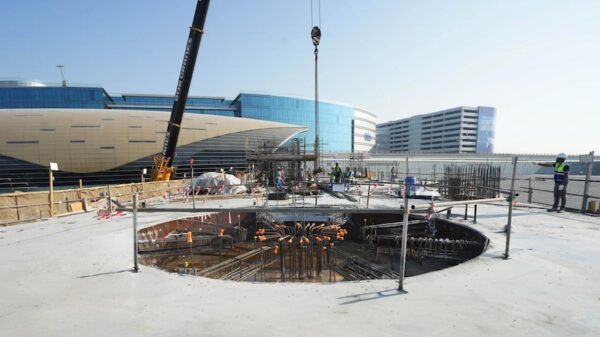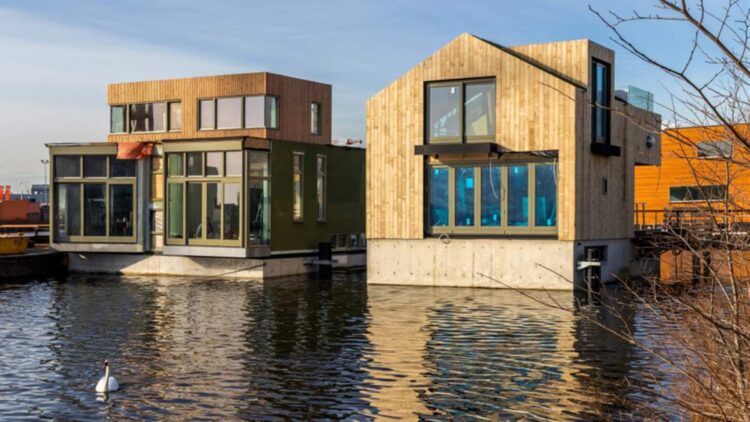The Netherlands is pioneering a transformative approach to housing by developing floating homes designed to adapt to rising water levels and flooding. As climate change exacerbates the threat of floods, the country is moving away from traditional flood defenses and embracing innovative architecture that floats and rises with the water. This approach has been supported by findings from the Climate-ADAPT report from the European Environment Agency (EEA), which highlights the effectiveness of these structures in flood-prone areas.
The potential of these floating homes was notably demonstrated during the floods of the Maas River in 2011. At that time, properties constructed with this adaptive design effortlessly floated with the rising waters, returning to their original positions unharmed once the floodwaters receded. Today, the vision of adaptive housing has become a reality, with projects like the floating neighborhood of Schoonschip in Amsterdam and over 200 homes built by the firm Waterstudio leading the way.
Embracing Water as a Resource
In the context of the Netherlands, where extensive dike systems protect against flooding, the focus has shifted to a philosophy of coexistence with water. Rather than solely relying on traditional barriers, engineers are designing amphibious houses that are anchored to the land but can move vertically in response to rising water levels. According to the Climate-ADAPT database, these structures are highly effective in managing flood risks.
The Netherlands serves as an ideal testing ground for innovative housing solutions due to its unique challenges. With demographic pressures leading to a scarcity of solid land, particularly in densely populated cities, utilizing water surfaces for residential development is increasingly appealing. Furthermore, the nation’s rich heritage in water management equips architects and engineers with the expertise needed to navigate complex adaptation solutions.
Challenges Ahead for Global Adaptation
While the advantages of floating homes are clear—such as flexibility and efficient land use—expanding this model to larger cities presents significant challenges. Essential infrastructure connections, including utilities and sewage systems, are more complicated for floating structures compared to traditional buildings. Additionally, existing building codes are primarily designed for fixed structures, necessitating a revision of regulatory frameworks to accommodate this new approach.
As discussions continue at COP30 in Brazil, adaptation to climate change remains a focal point. The Dutch experiment with floating homes stands as a potential blueprint for future housing solutions that prioritize adaptation over mere resilience. By embracing water rather than fighting against it, the Netherlands is setting a precedent for other nations grappling with similar environmental challenges.
In summary, the innovative floating homes in the Netherlands illustrate a forward-thinking approach to housing in the face of climate change. As the global community seeks sustainable solutions, the Dutch model offers valuable insights into how urban living can harmonize with the natural movement of water.




































































